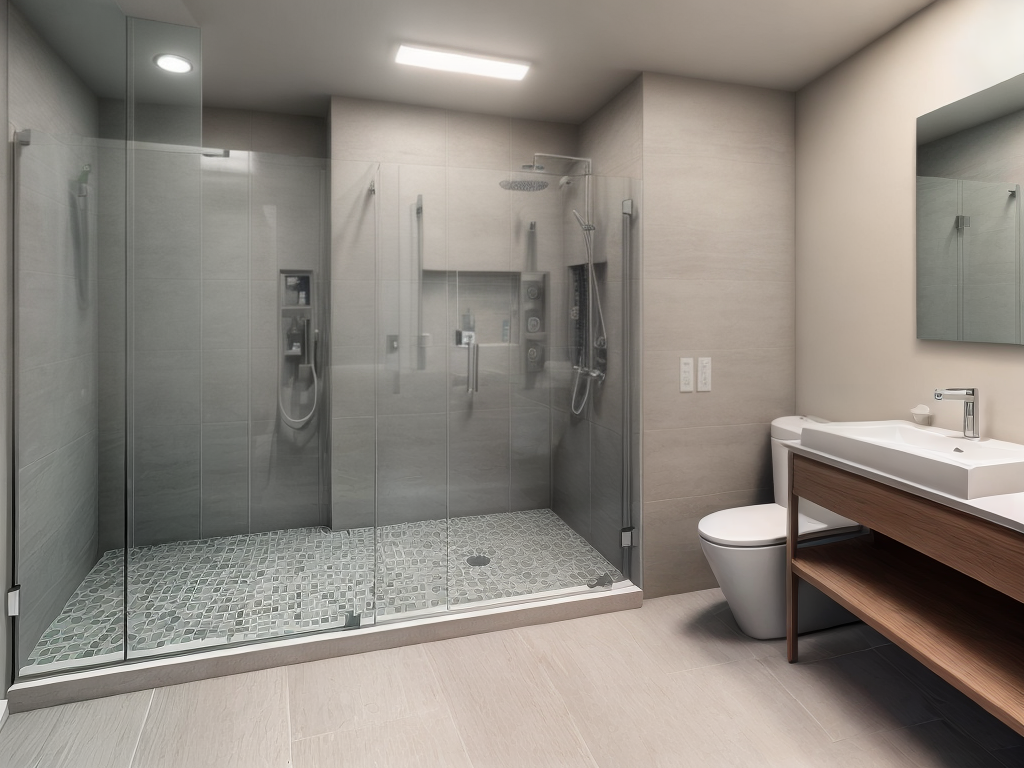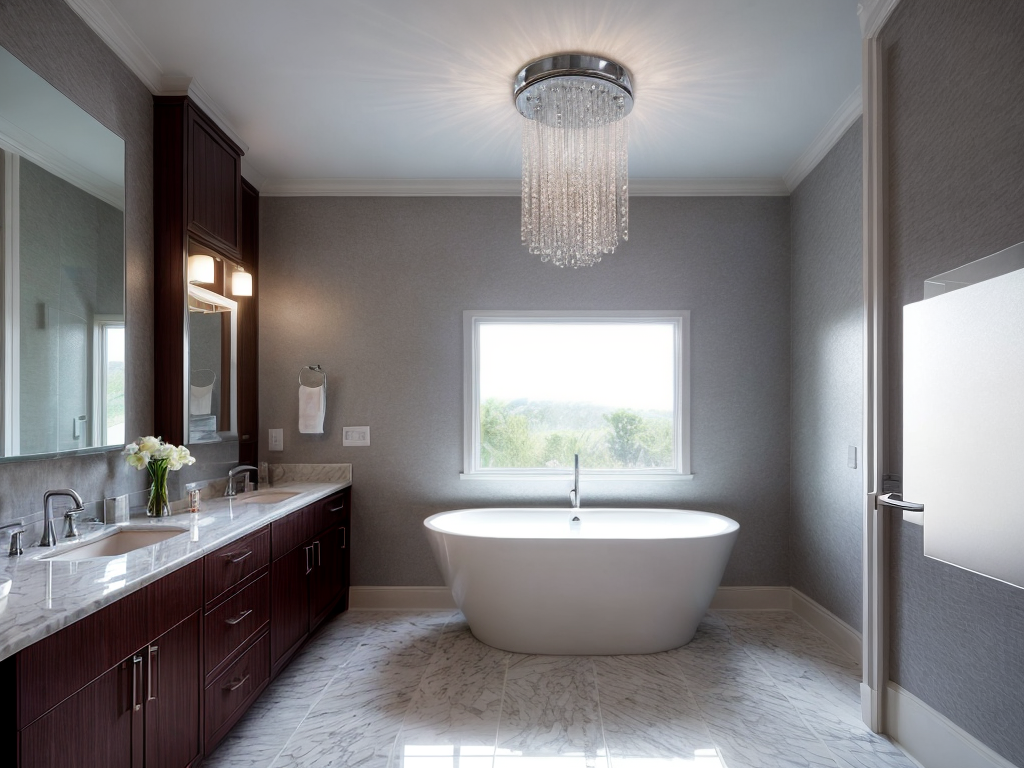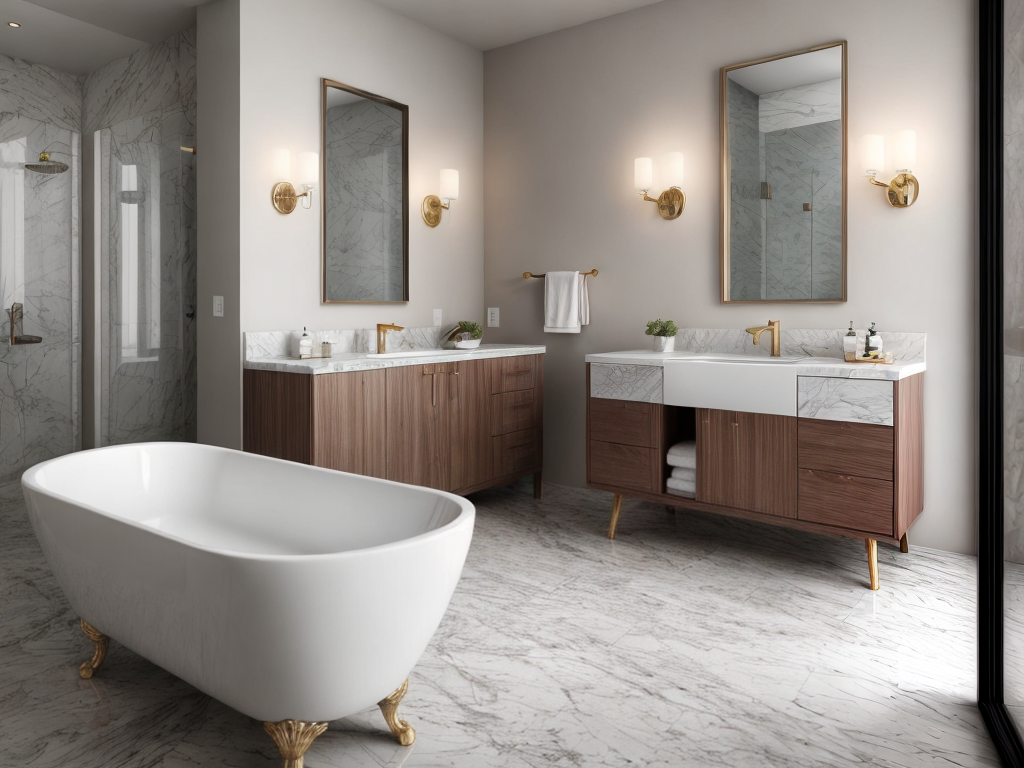
When it comes to bathroom renovations, choosing the right flooring can make all the difference. The bathroom is one of the most frequently used rooms in the house, so it’s important to choose a durable and long-lasting flooring option that can withstand heavy foot traffic, moisture, and spills.
In this ultimate guide, we’ll be discussing everything you need to know about choosing the perfect bathroom flooring. From the different types of flooring options available to the pros and cons of each, we’ve got you covered.
Types of Bathroom Flooring
There are a variety of flooring options available for bathrooms, each with its own advantages and disadvantages. Here are some of the most popular types of bathroom flooring:
1. Ceramic or Porcelain Tile
Ceramic or porcelain tile is a popular choice for bathroom flooring due to its durability and water-resistant properties. It’s also available in a variety of colors, patterns, and textures, making it easy to find a style that suits your personal taste.
One of the downsides of tile flooring is that it can be cold and hard underfoot, making it uncomfortable to stand on for long periods. It can also be slippery when wet, which can be dangerous for young children or elderly individuals.
2. Vinyl Flooring
Vinyl flooring is a popular and affordable choice for bathroom flooring. It’s easy to install, water-resistant, and available in a variety of styles and colors. It’s also softer underfoot than tile, making it a more comfortable option for those who spend a lot of time in the bathroom.
The downside of vinyl flooring is that it can be prone to scratches and tears, and it’s not as durable as tile or stone flooring. It also doesn’t add as much value to your home as some other flooring options.
3. Stone Flooring
Stone flooring, such as marble or granite, is a luxurious and high-end option for bathroom flooring. It’s durable, water-resistant, and adds instant elegance to any bathroom.
The downside of stone flooring is that it can be expensive and difficult to install. It’s also cold and hard underfoot, which can be uncomfortable for some people.
4. Laminate Flooring
Laminate flooring is a budget-friendly option for bathroom flooring. It’s easy to install, water-resistant, and available in a variety of styles and colors.
The downside of laminate flooring is that it’s not as durable as some other flooring options, and it can be prone to warping or swelling if it gets wet.
Factors to Consider When Choosing Bathroom Flooring
When choosing the perfect bathroom flooring, there are several factors to consider. Here are some of the most important considerations:
1. Durability
Bathrooms are high traffic areas, so it’s important to choose a flooring option that can withstand heavy foot traffic and moisture. Tile, stone, and vinyl flooring are all durable options that can withstand the wear and tear of daily use.
2. Water Resistance
Bathrooms are also prone to water spills and moisture, so it’s important to choose a flooring option that is water-resistant. Tile, stone, and vinyl flooring are all water-resistant options that can withstand exposure to water.
3. Style
Bathrooms are a personal space, so it’s important to choose a flooring option that reflects your personal style. Tile and stone flooring offer a variety of colors, patterns, and textures to choose from, while vinyl flooring offers a wide range of styles and colors to suit any décor.
4. Comfort
Standing on a hard and cold bathroom floor can be uncomfortable, so it’s important to choose a flooring option that is soft and comfortable underfoot. Vinyl and laminate flooring are both softer underfoot than tile or stone flooring.
Conclusion
Choosing the perfect bathroom flooring is an important decision that can impact the look and feel of your bathroom. When choosing a flooring option, consider factors such as durability, water resistance, style, and comfort. With the right flooring choice, you can create a beautiful, functional, and comfortable bathroom that you’ll love for years to come.



